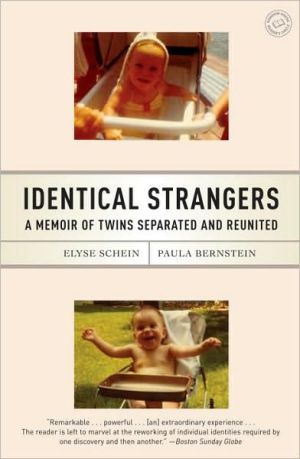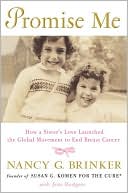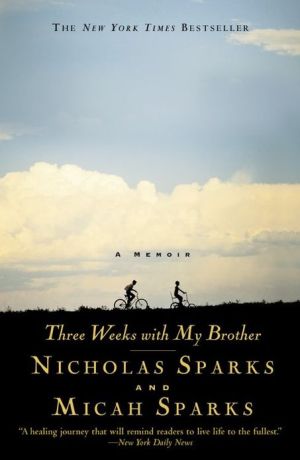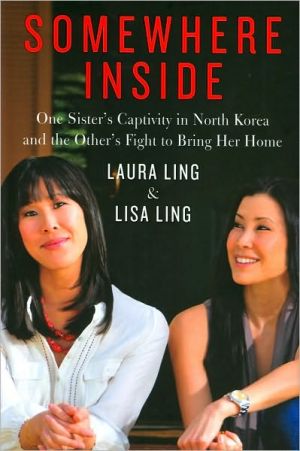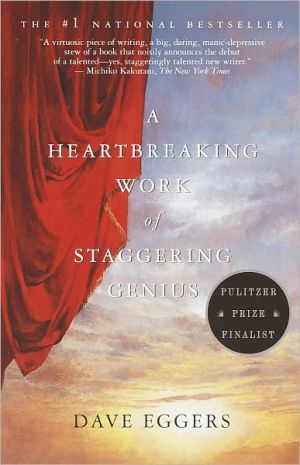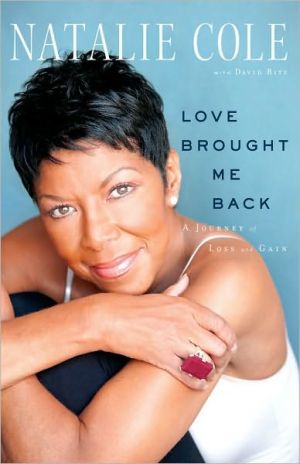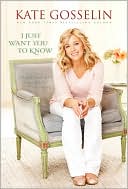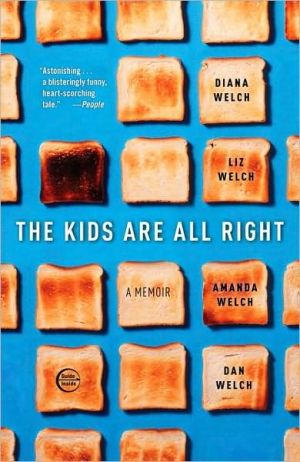Identical Strangers: A Memoir of Twins Separated and Reunited
Elyse Schein had always known she was adopted, but it wasn’t until her mid-thirties while living in Paris that she searched for her biological mother. What she found instead was shocking: She had an identical twin sister. What’s more, after being separated as infants, she and her sister had been, for a time, part of a secret study on separated twins.\ Paula Bernstein, a married writer and mother living in New York, also knew she was adopted, but had no inclination to find her birth mother....
Search in google:
Elyse Schein had always known she was adopted, but it wasn’t until her mid-thirties while living in Paris that she searched for her biological mother. What she found instead was shocking: She had an identical twin sister. What’s more, after being separated as infants, she and her sister had been, for a time, part of a secret study on separated twins.Paula Bernstein, a married writer and mother living in New York, also knew she was adopted, but had no inclination to find her birth mother. When she answered a call from her adoption agency one spring afternoon, Paula’s life suddenly divided into two starkly different periods: the time before and the time after she learned the truth. As they reunite, taking their tentative first steps from strangers to sisters, Paula and Elyse are left with haunting questions surrounding their origins and their separation. And when they investigate their birth mother’s past, the sisters move closer toward solving the puzzle of their lives.Praise for Identical Strangers:Winner of a Books for a Better Life Award“Remarkable . . . powerful . . . [an] extraordinary experience . . . The reader is left to marvel at the reworking of individual identities required by one discovery and then another.”–Boston Sunday Globe“[A] poignant memoir of twin sisters who were split up as infants, became part of a secret scientific study, then found each other as adults.”–Reader’s Digest (Editors’ Choice)“[A] fascinating memoir . . . Weaving studies about twin science into their personal reflections . . . Schein and Bernstein provide an intelligent exploration of how identity intersects with bloodlines. A must-read for anyone interested in what it means to be a family.”–Bust“Identical Strangers has all the heart-stopping drama you’d expect. But it has so much more–the authors’ emotional honesty and clear-eyed insights turn this unique story into a universal one. As you accompany the twins on their search for the truth of their birth, you witness another kind of birth–the germination and flowering of sisterly love.”–Deborah Tannen, author of You’re Wearing That?
IDENTICAL STRANGERS\ from CHAPTER ONE\ ELYSE:\ My mother, my adoptive mother, my real mother, died when I was six, but throughout my childhood I believed she watched over me from above. I held the few images that remained of her in my mind like precious photographs I could animate at will. In one, she sat before her dressing table, lining her charcoal eyes, preparing to go out with my dad one Saturday night. The scent of her Chanel No. 5 is enchanting.\ I can still see her. She catches a glimpse of me in the mirror and smiles at me, standing in the doorway in my pajamas. With her raven hair, she looks like Snow White. Then, after her death, she seemed to simply disappear, like a princess banished to some far-away kingdom. I believed that from that kingdom, she granted me magical powers.\ When I jumped rope better than the other girls in my Long Island neighborhood, I knew it was because my mother was with me. When I went out fishing with my dad and brother, my mother helped me haul in the catch of the day. By sheer concentration, I could summon her force so that my frog won the neighborhood race.\ Since I wasn’t allowed to attend my mother’s funeral, her death remained a mystery to me. When other kids asked how she had died, I confidently announced that she had had a backache. I later learned that her back problems had been caused by the cancer invading her spine.\ Along with my mother’s absence came an awareness of my own presence. I remember standing in complete darkness in front of the bay windows in our house shortly after her death. Alone, except for my reflection, I became aware of my own being. As I pulled away from the glass, my image disappeared. I asked myself, Why am I me and not someone else?\ Until autumn of 2002, I had never searched for my birth parents. I was proud to be my own invention, having created myself out of several cities and cultures. In my ignorance surrounding my mother’s death, I amplified the importance of the few facts I had accumulated—she was thirty-three when she died, which I somehow linked to our new home address at 33 Granada Circle. It was probably no coincidence that when I reached the age of thirty-three, after one year in Paris, the urge to know the truth of my origins grew stronger. Turning thirty-three felt the way other people described turning thirty. I felt that I should automatically transform into an adult.\ I had recently starting wearing glasses to correct my severe case of astigmatism, which had allowed me to see the world in a beautiful blur for several years. All the minute details I had been oblivious to were suddenly focused and magnified. But even if it meant abandoning my own blissful vision of the world, I was ready to face the truth.\ I was working in the unlikeliest of places, as a temporary receptionist in a French venture capital firm in the heart of Paris’s business district. Of course, the desire to eat something other than canned ratatouille for dinner had played a part. I assured myself that I wasn’t like the suburbanites who commuted every day in order to pay for a satellite dish and a yearly six-week vacation to the south of France.\ Initially I had amused myself by observing French business decorum. As the novelty wore off, I entertained myself with the front desk computer. Assuming a businesslike pose, I sat for hours alternating between answering the phone and plugging words and topics into various search engines. I typed in old friends’ names and discovered that my classmates from SUNY Stony Brook were now philosophy professors and documentary directors. One had even edited the latest Jacques Cousteau film.\ Meanwhile, bringing espressos to hotshots in suits, I was beginning to doubt that my particular path would somehow lead me to realize my own dream of directing a cinematic masterpiece. After college graduation, I had migrated to Paris, leaving New York and my boyfriend behind to pursue the life I imagined to be that of an auteur film director. My Parisian film education consisted of regular screenings at the cinématèque and the small theaters lining the streets near the Sorbonne. Sitting in a dark cinema, I returned to the safety of the womb, united with an international family of strangers.\ I wanted to go far away, to become someone else. In the French tongue, my name, “Stacie,” sounded like “Stasi,” the word for the East German secret police. Wanting a name that could be pronounced in any language, I took Elyse, my middle name. I couldn’t change my name entirely, though, for as far away as I wanted to wander, I always wanted to be easily found.\ My family still called me Stacie, but not in person because I hadn’t seen them in four years. My schizophrenic brother could barely leave his house, much less get on a plane. My absence was convenient for them. I criticized their überconsumerism, while they couldn’t understand my reluctance to join them in civilization. Though they would have bailed me out if I couldn’t pay my $215/month rent, I wouldn’t ask them to. My relationship with my father and my stepmother, Toni, consisted of a biweekly call to Oklahoma, where we had moved when I was eleven.\ “Is everything okay?” they would ask.\ “Yeah. Is everything okay?” I would echo back. “Everything’s okay. The same.” The same meant that my nephew was still causing mayhem. My family adopted my nephew Tyler as an infant, when my brother, Jay, and his then girlfriend abandoned him. Struggling with the onset of schizophrenia, Jay and Darla, a seventeen-year-old high school dropout, were in no position to raise a baby. Though I never saw them do drugs, I’d heard rumors that Darla sniffed paint while she was pregnant. Since the moment I snuck into the hospital room and watched Tyler enter the world, I have felt like his guardian angel. I even considered smuggling him into Canada to raise him as my own. Now the child in whom I had put so much hope had become an ornery teenager. The apple had not fallen far from the tree: Tyler had begun to use drugs. Disagreeing with my parents on how to handle him, I was excluded from his life.\ The hum of the computer filled the silent office. Monsieur Grange had ordered me not to disturb him in his important meeting, so I was able to hide behind my polite mask while making contact with the outside world via the Internet. On a whim, I typed in “adoption search” and the die was cast. Countless sites appeared. I sorted through them until I found what seemed to be the most reputable, the New York State Adoption Information Registry. Unlike some states and other countries where adoption records are open to adoptees, New York seals adoption records; they can only be opened by petitioning the court. The Adoption Registry allows biological parents, children, and siblings to be put in contact, if all parties have registered. Maybe my birth parents were simply waiting for me to register and I would soon be reunited with the mysterious and formidable characters who had shadowed my life. Perhaps, after searching for many years, they had been unable to find me. On the other hand, as a temp, I certainly was not at the pinnacle of my minor artistic success, and the thought of disappointing these imaginary figures was daunting. Maybe they would reject me again. Or perhaps they wouldn’t be fazed at all, having come to peace with their decision years ago. I would be a hiccup in their reality. The scenarios and possible repercussions of my inquiry multiplied infinitely in my mind, a million possible futures.\ I filled in a form requesting identifying and nonidentifying information about my birth parents and sent it to the registry in Albany.
\ School Library JournalAdult/High School -Schein recalls saying, "I feel like I've lost a twin," during periodic bouts with depression. However, Bernstein lived "blissfully ignorant" prior to learning about the existence of her sister. Reunited at the age of 35, these identical twins embarked on a journey to uncover the story of their separation. Research into their genealogical background revealed an ethically questionable study on identical twins performed by the doctors associated with the agency that facilitated their adoptions. In alternating voices, the women detail their emotional struggles as they navigated their developing relationship and the realities of the circumstances surrounding their birth and separation. As their relationship evolved, they marveled at their extensive similarities, but also dealt with the confusion and pain associated with their new identities. Their stories are enhanced by the anecdotal and scientific information they gathered while searching for the motives of the study they unknowingly took part in as adoptees. Ultimately, the authors came to terms with their new personae, and, through that process, redefined their notions of the bond they share. Teens will be pulled in by the mystery surrounding the study and the identity of the authors' birth mother. The questions and evidence fueled by the nature vs. nurture debate will interest those fascinated by the roles DNA and environment play in human development and spark interesting book club and classroom discussion.-Lynn Rashid, Marriots Ridge High School, Marriotsville, MD\ Copyright 2006 Reed Business Information.\ \ \ \ \ Kirkus ReviewsIntriguing but clunky account of twins who found each other in midlife. In 1969, two families in New York each adopted a baby girl who had been given up by a mentally ill birth mother. Neither the adoptive parents nor the girls themselves knew about the existence of a twin. More than three decades later, the younger sister, Schein, petitioned the adoption agency for information about her birth mother and learned about her twin. She quickly tracked down Bernstein, a married mom who led a calm, settled life and sometimes felt that her aimless, single sister wanted too much from her. Their attempt to forge an adult relationship was initially fraught, but eventually the two women settled into a comfortable friendship and determined to find out who their mother was and why they were separated. The most interesting sections of their joint memoir chronicle their detective work. It turned out that Schein and Bernstein were unwitting subjects in a very controversial study of twins reared in different homes. Trying to understand the study's ethics and aims, the sisters traveled to numerous archives, tracked down the nonagenarian doctor who spearheaded the project and talked to other separated twins. Their book probes the nature-nurture debate and considers whether the findings of a study that lacked participants' informed consent ought to be made public. Unfortunately, stilted prose sucks the life out of this promising material. Lacking individual character, Schein's and Bernstein's alternating first-person sections have the same trite, melodramatic voice, given to statements like, "I mourn for the abandoned orphan I once was." The dialogue is especially unconvincing: "I realize now that yours isthe heartbeat I've always missed," Schein tells her sister. Looking for a riveting reunited twin tale? Stick with The Parent Trap.\ \
